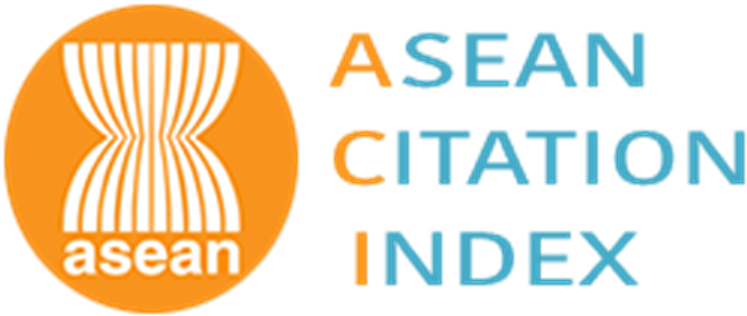การศึกษาการพยากรณ์มูลค่าหน่วยลงทุนของกองทุนรวมในประเทศไทย
A Study on Forecasting Mutual Fund Net Asset Value in Thailand
Abstract
การศึกษานี้เป็นการเปรียบเทียบวิธีการพยากรณ์มูลค่าหน่วยลงทุนของกองทุนรวม 2 วิธี คือ วิธีเคเนอร์เรสเนเบอร์และวิธีโครงข่ายประสาทเทียม โดยใช้ข้อมูลชุดที่ 1 ตั้งแต่วันที่ 30 กันยายน พ.ศ. 2558 ถึงวันที่ 28 กุมภาพันธ์ พ.ศ. 2563 ย้อนหลัง 4 ปี 5 เดือน ของกองทุนรวม 3 กองทุน ได้แก่ กองทุนเปิดเค ดัชนีหุ้นจีน (K-CHX) จำนวน 991 ชุด กองทุนเปิดไทยพาณิชย์หุ้นจีน (SCBCE) และกองทุนเปิดทหารไทย China Opportunity (TMBCOF) จำนวนกองทุนละ 1079 ชุด โดยใช้เกณฑ์ค่าเฉลี่ยของเปอร์เซ็นต์ความคลาดเคลื่อนสัมบูรณ์ (MAPE) และค่าเฉลี่ยความคลาดเคลื่อนกำลังสอง (MSE) ผลการศึกษาพบว่า สำหรับกองทุนรวม 3 กองทุน วิธีโครงข่ายประสาทเทียมพยากรณ์มูลค่าหน่วยลงทุนย้อนหลัง 4 ปี 5 เดือน ให้ค่า MAPE และค่า MSE ต่ำกว่าวิธีเคเนอร์เรสเนเบอร์เล็กน้อย และเมื่อนำวิธีการพยากรณ์ทั้ง 2 วิธี มาพยากรณ์มูลค่าหน่วยลงทุนล่วงหน้าของข้อมูลชุดที่ 2 ตั้งแต่วันที่ 1 ถึงวันที่ 15 มีนาคม พ.ศ. 2563 ณ เวลาสิ้นวันทำการ พบว่า สำหรับกองทุนเปิดไทยพาณิชย์หุ้นจีนและกองทุนเปิดทหารไทย China Opportunity วิธีโครงข่ายประสาทเทียมพยากรณ์มูลค่าหน่วยลงทุนได้ดีกว่าวิธีเคเนอร์เรสเนเบอร์ และสำหรับกองทุนเปิดเค ดัชนีหุ้นจีน วิธีเคเนอร์เรสเนเบอร์พยากรณ์ได้ดีกว่าวิธีโครงข่ายประสาทเทียม
This study aims to compare the two forecasting methods: k-nearest neighbor method and artificial neural networks method in forecasting mutual fund net asset values in Thailand. There are 2 groups of the studied data. The first group contains 4-year and 5-month data from 30 September 2015 to 28 February 2020 of 991 sets of K-CHX and 1079 sets of SCBCE and TMBCOF. The accuracy of forecasting are shown as the Mean Absolute Percent Error (MAPE) and Mean Squared Error (MSE). The results indicated that for the 3 mutual funds, based on MAPE and MSE, artificial neural network method is better. The second group con-tains from 1 to 15 March 2020 which are used ahead of forecasts. It is found that artificial neural networks method is better for SCBCE and TMBCOF. However, k-nearest neighbor method is better for K-CHX.
Keywords
[1] K. Alkhatib and H. Najadat, I. Hmeidi, and Mohammed K. Ali Shatnawi, “Stock price prediction using K-Nearest Neighbor (Knn) algorithm,” International Journal of Business, Humanities and Technology, vol. 3, no. 3, pp. 32–44, 2013.
[2] I. Vainionpaa and S. Davidsson, “Stock market prediction using the K Nearest Neighbours algorithm and a comparison with the moving average formula,” B.S. thesis, Department of Computer Science Education, KTH Royel Institute of Technology, Sweden, 2014.
[3] T. Prakobphon, “Artificial neural networks,” HCU Journal 73, vol. 12, no. 24, 2009 (in Thai).
[4] T. Sujjaviriyasup, “Artificial neural network model for forecasting monthly price of maize in Thailand,” Srinakharinwirot Science Journal, vol. 34, no. 1, pp. 91-107, 2018 (in Thai).
[5] SCB Bank. (2019). Fund Information. SCB Asset Management Co.,Ltd. Bangkok, Thailand. [Online]. Available: https://www.scbam.com/th/fund/default/fund-information/SCBCE.
[6] Kasikorn Asset Management (2019). Mutual Fund. Kasikorn Asset Management Co., Ltd. Bangkok, Thailand. [Online]. Available: https://www.kasikornasset.com/TH/mutualfund/nav/Pages/history.aspx?fund_code=K-CHX.
[7] TMB Bank. (2019). Past Investment Unit Value. TMB Asset Management Co., Ltd. Bangkok, Thailand. [Online]. Available: https://www.tmbbank.com/tmbadvisory/partner/previous.
DOI: 10.14416/j.kmutnb.2020.08.002
ISSN: 2985-2145





